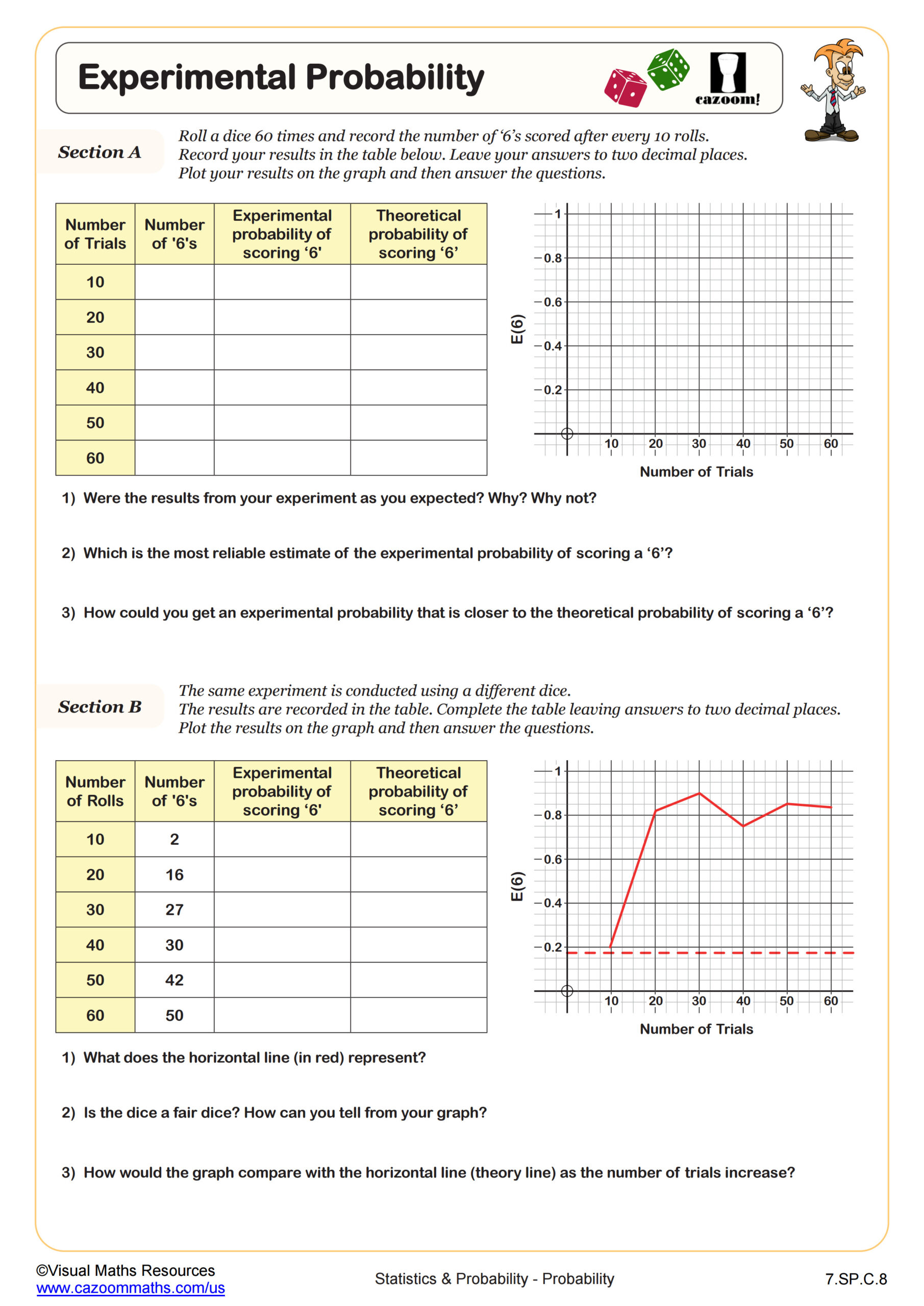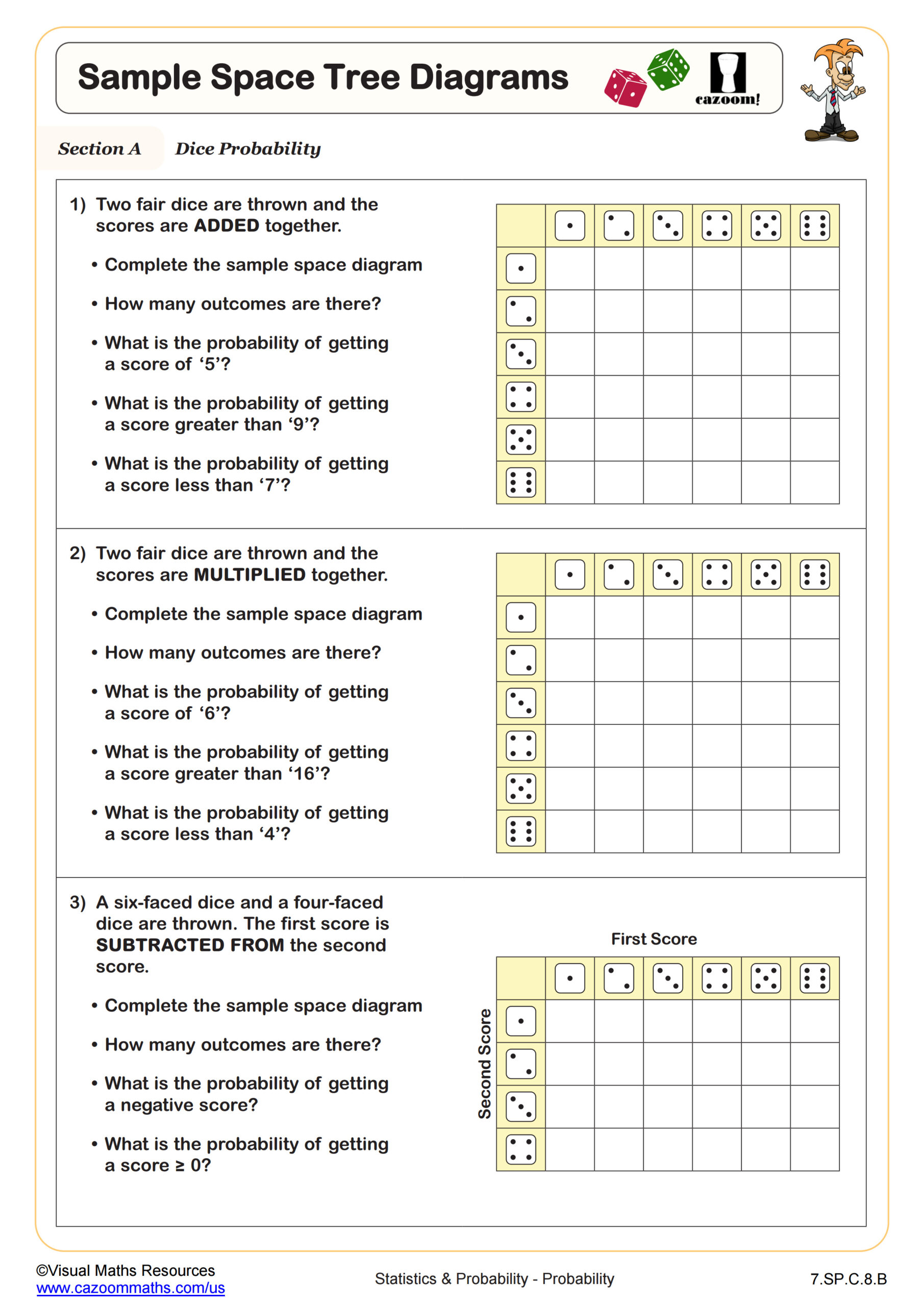Loading...
Back to:
Experimental Probability WORKSHEET
Suitable for Grades: 7th Grade
CCSS: 7.SP.C.8
CCSS Description: Find probabilities of compound events using organized lists, tables, tree diagrams, and simulation. a. Understand that, just as with simple events, the probability of a compound event is the fraction of outcomes in the sample space for which the compound event occurs. b. Represent sample spaces for compound events using methods such as organized lists, tables and tree diagrams. For an event described in everyday language (e.g., “rolling double sixes”), identify the outcomes in the sample space which compose the event. c. Design and use a simulation to generate frequencies for compound events. For example, use random digits as a simulation tool to approximate the answer to the question: If 40% of donors have type A blood, what is the probability that it will take at least 4 donors to find one with type A blood?
Experimental Probability WORKSHEET DESCRIPTION
Students will conduct their own dice experiment and compare their results with theoretical probability in section A. In section A, students must roll a dice 60 times and record the number of ‘6’s scored after every 10 rolls in the table provided and plot their results on a graph (axes provided). Students will compare their results with the theoretical probability of rolling a fair dice and could also compare their results with their peers.
In section B, the same experiment has been carried out, but this time, the results have been provided. Students will again work out the experimental probability of these results, plot them on a graph, and discuss by answering questions about the data.




